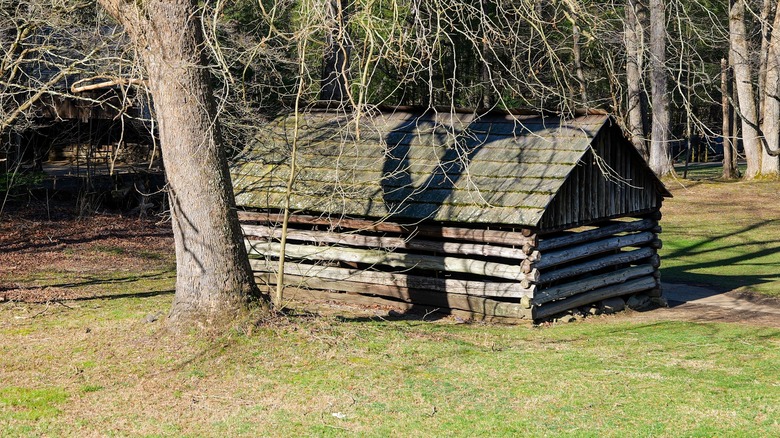Construct A Sturdy Shed For Your Backyard Using Cut Tree Poles
If you're planning to build a shed in your backyard, metal, resin, and wooden planks probably come to mind as your material choices. But what if we told you that you can ditch these run-of-the-mill options and build a more natural, sustainable, and unique-looking shed with a material that won't break the bank? We're talking about tree poles. Using tree poles in shed construction offers a number of benefits that more conventional methods don't.
For one, tree logs are inexpensive and easy enough to source. If you're homesteading, chances are that you already have access to your own supply of logs (otherwise, you can easily buy them from a local timber shop). What's more, log construction boasts great durability, so you can expect the pole-built shed to withstand powerful winds, seismic events, and even encroaching wildfires. Finally, wooden poles are a renewable material, so your tree pole shed will have a smaller carbon footprint than a conventionally built equivalent.
Log sheds have a few downsides, too. Crucially, the logs closest to the ground can suffer from moisture problems, especially if the builder doesn't follow construction best practices. To help you avoid quality issues with your log shed, below we've put together a list of steps for building this structure and staying out of trouble with local building and planning officials.
Tree pole shed construction steps
First, find out whether your local building authorities require a permit for the shed. These requirements differ between jurisdictions. For example, in Seattle, single-storey sheds less than 120 square feet, built on a simple concrete or gravel foundation, and not attached to the dwelling don't require a permit. Meanwhile, in San Francisco, the shed roof area limit is 100 square feet if you don't want to get drawings and a building permit. To comply with the local codes, research the requirements in your area.
Your storage shed needs a foundation to be safe from the elements and remain stable over time. Raising the structure off the ground also enables air circulation inside, which is a good way to combat mold and other humidity-related issues. If you're not sure where to start, find out how to DIY a simple storage shed foundation quickly and without spending too much.
Do your best to source logs of the same length, or at least cut them to the same dimension to make assembly easy. To erect the walls, cut out notches at the top of every log (near its end) to fit the perpendicular log you're staking on top. This connection will be the same at each corner of the shed. Then, continue stacking the logs in the same manner. At the front of the shed, you can use shorter logs to build a smaller wall — this way, you have an access opening to the shed. Finally, install sufficiently long vertical poles to hold up the roofing material. For stability, place these poles into holes with a depth of at least ⅓ of the pole's length, then cement them with concrete. Now, use a plastic sheet weighed down by sticks as your roof. Alternatively, opt for a more long-lasting shed roof material, like cedar shakes.
